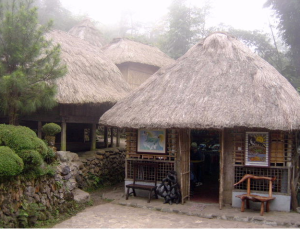With more flooding all around the country this week, here’s a more positive extreme-weather experience from the vaults. . .
We woke to find a white wilderness surrounding our little cottage. Filled with childish glee, we gulped back tea and threw on wellies, eager to be out. There had been snow in London that week, too, but it was nothing to this Narnia-like wonderland that awaited us.
The news had reported traffic chaos across South England, but in the tiny village of Wootton Fitzpaine in Dorset, just three miles north-east of Lyme Regis, all was still. We pointed our boots uphill and creaked over untouched snow towards Wootton Hill and Charmouth Forest. Snow lay in thick slices on gates and branches, and ours were the only footprints.
As we trudged towards the forest, the snow began to fall again, and we threw a few sly snowballs, reassured that the signs of our desecration would be quickly covered over again. Calling a ceasefire, we noticed some smaller tracks and looked up just in time to see a flash of copper against the white, as a glossy-coated fox disappeared into the trees. We followed him noisily and soon found ourselves floundering in snow that almost overwhelmed our wellies.
Locating what we took to be the path through the forest, we found our way barred by boughs weighted to the ground with snow. We clambered over these and deeper into the forest, where the silence was absolute, past columns of tall birch trees, their northerly flanks camouflaged in white while the opposite sides, hidden from the wind, were still bare.
Suddenly, we encountered a second pair of footprints; what looked like a man and a very large dog – perhaps even a bear, we surmised, our imaginations snow-dazzled. Something about these tracks struck us as confident, purposeful, and we followed them deeper into the forest. Here the trail became confused by hundreds of smaller tracks – birds, foxes, deer, and others unidentifiable to our city eyes.
We came across a digger, abandoned in a clearing and looking as though it hadn’t been used in years. Its corners and deep snow harvest provided a fitting ground for Round Two of the snowballing battles.
Rejoining the trail of our man and his bear-dog, as snow began to seep in through a puncture in my welly, we paused to glance at our ordnance survey map, in a bid to discover if we were even vaguely on our intended path.
But the white-out rendered everything strange and unfamiliar. We returned to following the tracks.
In another clearing, we built a small snowman, before numb hands and rumbling tummies urged us onwards again.
At an apparent dead-end we first began to doubt our guides, as their prints encouraged us to clamber through thick growth. Scratched and muddy, we emerged out of the forest at last and once again on a path of sorts, with fields belonging to farms surrounding us on all fronts. Peering again at our ordnance survey map, we discovered that the only possible route back seemed to take us across some of these fields. Keeping our gloved fingers crossed that any farmers and their dogs would take our trespass kindly, we stumbled on.
After having to retrace our footsteps several times owing to barbed wire, electric fences and unmapped streams, we finally arrived at the top of a hill, on what seemed to be a proper lane. For the first time in over four hours, we heard voices other than our own – children in a nearby field, sledding. Although, as we never saw them, it was hard to be certain.
Slipping in the sludgy remains of driven-over snow, we allowed the steep decline to tug our weary legs back towards home.
That night, our taxi driver into Lyme Regis cursed the state of the roads. “These lanes are atrocious!” he exclaimed repeatedly, bemoaning the lack of gritters off the main roads. We smiled out of the windows and into the dark hedgerows. The village is also without a post-office, a shop or a pub (and we never quite got up the courage to enter the village hall). A bus does call in Wootton Fitzpaine – but only once a week. Sentimental visitors that we were, the snow seemed just another tool in keeping the place isolated and to ourselves.




 Hidden just outside the mountain city of Baguio – summer capital of the Philippines – sits Tam-awan Village. An artists’ colony based around a cluster of the traditional dwellings of the Ifugao and Kalinga (two of the many tribes of the Cordillera region), Tam-awan was founded in 1998 and continues to attract the more intrepid visitors from all over the Philippines, and, indeed, the world.
Hidden just outside the mountain city of Baguio – summer capital of the Philippines – sits Tam-awan Village. An artists’ colony based around a cluster of the traditional dwellings of the Ifugao and Kalinga (two of the many tribes of the Cordillera region), Tam-awan was founded in 1998 and continues to attract the more intrepid visitors from all over the Philippines, and, indeed, the world.

